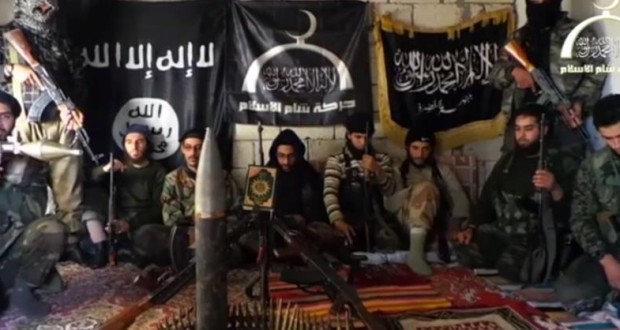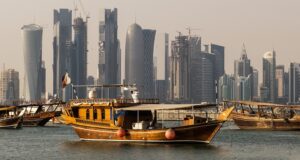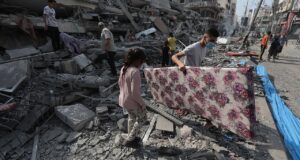By Jacob Campbell – Senior Fellow
17th June 2014. Security and Defence, Issue 2, No. 2.
The fall of Mosul to the Islamic State of Iraq and Syria (ISIS) is far more complex than the headlines imply.
The fall of Mosul, allegedly to the Islamic State of Iraq and Syria (ISIS), is not the military victory it has been made out to be. For a start, as the New York Times and Agence France-Presse report, ISIS gunmen (who faced an army outnumbering them fifty-to-one) were able to occupy strategic positions around the city only after Iraqi commanders ordered their troops to stand down and retreat.
As in the case of Fallujah – about which I have written time and timeagain – the situation in Mosul is far more complex than the headlines imply.
To its credit, BBC News has been less hasty than most in jumping to conclusions, cautioning that “it is not yet clear whether it is only ISIS involved in the Mosul takeover,” and further noting that Iraqi Prime Minister Nouri al-Maliki “has clearly alienated many Sunni tribesmen and others … Internet images of local youths and even children stoning Iraqi security vehicles as they fled Mosul suggest that the Shia PM is not popular there.” It also quotes a Mosul resident as saying that civilian “inhabitants have formed popular defence committees to protect the banks and government buildings.”
Although ISIS is undoubtedly present in Mosul, there are otherarmed groups too; together, they encompass a cross-section of Iraq’s Sunni population, and reflect its universal rejection of Maliki’s sectarian rule. The Association of Muslim Scholars, which represents the Sunni clerics, for instance, has called on “every young person … to take [up] arms [and] join the revolutionist forces.” For this reason, the European Iraqi Freedom Association – a newly formed NGO whose supporters include current and former lawmakers, premiers and government ministers – has disputed the preponderance of ISIS, arguing instead that “the recent actions [in Mosul are] part of a popular uprising, which Maliki [is] attempting to suppress.” Former Iraqi Vice President Tariq al-Hashemi has been more explicit,describing events in Mosul as a “revolution of the oppressed.” Whether ISIS will succeed in hijacking this “revolution” remains to be seen.
ISIS, it must be understood, is a nebulous entity with three distinct faces. The first face belongs to the ISIS that exists solely in the media, propagated by a scaremongering Iraqi government on the one hand and a grandstanding ISIS on the other. The second is that of ISIS proper, the very real and ultraviolent successor to al-Qaeda in Iraq (AQI). The third is no face at all, but reportedly a mask worn by the Iranian regime’s Islamic Revolutionary Guard Corps (IRGC).
As regards the first face of ISIS, statements made in recent months by Iraq’s most senior political and military officials betray a policy of deliberately inflating the ISIS threat:
“Ali al-Shalah, an SLC [Maliki’s party, the State of Law Coalition] member of parliament, [said] … ‘We look at all those who fire at the military forces as members of ISIS, regardless of what they call themselves’.” – Asharq Al-Awsat, 28 January
“A top security official, who spoke on condition of anonymity, said of the tribesmen and militants … ‘If anyone insists on fighting our forces, he will be considered an ISIS militant whether he is or not’.” – Reuters, 1 February
“‘Anyone who engages in any military actions is showing solidarity’ with ISIS, said Ali al-
Mussawi, an adviser to Maliki. ‘They are considered one and the same’.” – Washington Post, 12 March
In other words, when one reads a headline like, for example, “Iraqi army kills 40 ISIS fighters in Fallujah,” the only reasonable inference is that there are 40 bullet-riddled corpses littering the streets of Fallujah; the true affiliation of those dead insurgents simply cannot be asserted with any high degree of confidence. This disinformationcampaign has been pursued by Maliki to great effect, enabling him to claim that whole cities are “the headquarters for the leadership of al-Qaeda” or “absent of civilians, [with] only … criminals and killers … present there,” and giving him carte blanche to flatten entire neighbourhoods with barrel bombs.
The misattribution of armed activity to ISIS is invariably reinforced by ISIS itself, which frequently exaggerates the size of its membership and the scope of its operations by recycling old videos and faking new ones. One such video, of an ISIS military parade in Fallujah on March 20, convinced some that ISIS had assumed full control over the city. In reality, however, that “parade” was the choreographed work of what was essentially a travelling circus, who posed for the cameras in Fallujah before departing for Abu Ghraib, where they staged an identical procession later that same day.
The second face of ISIS – the real ISIS – is no less controversial than the first, with the primary bone of contention being the identity of its patrons. Maliki has accused Saudi Arabia of bankrolling the group, yet the prime minister of Iraqi Kurdistan claims “not [to have] seen evidence of Saudi sponsorship of terrorism in Iraq,” while another Kurdish official insists that reports of cooperation between Riyadh and ISIS are based solely on Iranian propaganda.
Indeed, despite repeated assurances that the case against Saudi Arabia was watertight and would soon be laid bare, Maliki has failed even partially to substantiate his original allegation, much to thefrustration of delegates at an international counter-terrorism conference held in Baghdad on March 12-13.
The question arises, then, “If not Saudi Arabia, who?” The most obvious candidate must surely be Iran, whose decade-long working relationship with AQI/ISIS began when the Iranian Revolutionary Guard Corps (IRGC) provided safe haven to Abu Musab al-Zarqawi and his retinue, helping them to conduct suicide bombings in the aftermath of the 2003 US-led invasion of Iraq. This covert alliance – the centrepiece of Tehran’s grand divide-and-rule strategy – culminated in 2006 with the destruction of the Golden Mosque in Samarra (one of the holiest sites in the Shia faith) and the resultant civil war of 2006-7.
By the end of 2012, the US Treasury Department had imposedsanctions on Iran’s Ministry of Intelligence and Security for “provid[ing] money and weapons to al-Qaeda in Iraq,” and identifiedfour senior AQI financiers living in Iran under the regime’s protection. Even more recently, in July 2013, Iraqi media was abuzz with the news of a leaked Iraqi Interior Ministry report that documented the shipment of “a large amount of magnetic explosives [to] Iraq from Iran … [which] have been received by logistics groups linked to the terrorist al-Qaeda organisation [ISIS] and dispersed in all provinces.”
If the second face of ISIS might credibly be described as an IRGC-sponsored enterprise, it is entirely plausible that the group’s third face is little more than a front for IRGC agents provocateurs. Eyewitness accounts from all over Iraq – from Diyala Province in the East to Anbar Province in the West – state that ISIS gunmen are in many cases IRGC operatives disguised as Sunni jihadists.
This is known to be a stratagem favoured by IRGC commander Qassem Soleimani, and has already been rolled out in Syria, where the Tehran-backed regime of Bashar al-Assad is reportedlyfacilitating the induction of 2,500 Iraqi Shi’ites into the ranks of ISIS. Many ISIS emirs killed or captured on the battlefield have beenfound to have Iranian passports, visas and SIM cards in their possession, while videos of ISIS operations are often uploaded to the internet from IP addresses in Iran.
As the Times of London reported, “President Assad has infiltrated an extreme jihadist group in Syria in a “Machiavellian” plot to divide the opposition and bolster his own position, terrorist experts and rebel forces claimed last night … Syrian forces appear not to be targeting areas where the hardline Islamist militants who used to be allied with al-Qaeda are fighting. The apparent move is in stark contrast to the daily bombardments against positions held by other opposition groups, the Free Syrian Army and other non-Islamist rebel factions.”
What does the Iranian regime hope to achieve by all of this? Although it considers Maliki an ally, it distrusts his ambition, and knows that “the more insecure and isolated Maliki becomes, the more he will need Iran,” to quote senior RAND Corporation analyst Alireza Nader. The mass-desertion of his army – which, incidentally, is commandedlargely by IRGC officers – and the subsequent collapse of state control in Mosul (Iraq’s second-largest city) come as a timely reminder to Maliki of just how insecure and isolated he is as he attempts to cobble together a new governing coalition.
Tehran has a major stake in the outcome of this process, and wishes to impress upon Maliki its ability to make or break him; Iran’s state-run Qods newspaper, a mouthpiece for the IRGC leadership, wroteon June 11 that the fall of Mosul was an inevitable consequence of “the inefficiency of Nouri al-Maliki’s government,” and threatened “a dangerous crisis” if the Prime Minister and his Shi’ite rivals fail to “renounce their disagreements” and form a government agreeable to the Islamic Republic.
With at least three IRGC battalions now fighting to restore order in Iraq’s restive cities, Maliki’s political survival – like that of Assad, to whom he bears an increasing resemblance – relies more heavily than ever on the continued support of his patrons in Tehran. The long-suffering Sunnis of Iraq, it would seem, are but pawns in this elaborate, bloody power play.
Jacob Campbell is contactable at:
Jacob.Campbell@hscentre.org
Please cite this article as:
Campbell, J. (2014). ‘The Three Faces of ISIS: Who is Behind the War in Iraq?’
Human Security Centre, Defence and Security, Issue 2, No. 2.
 Human Security Centre Human Rights and International Security Research
Human Security Centre Human Rights and International Security Research




